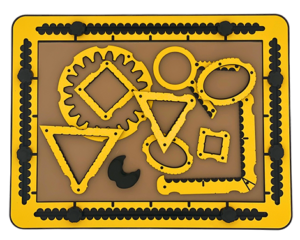array(
'next' => 'Next section',
'prev' => 'Previous section',
'next_default' => 'This is the last section',
'prev_default' => 'This is the first section'
),
'it' => array(
'next' => 'Sezione successiva',
'prev' => 'Sezione precedente',
'next_default' => 'Questa è l\'ultima sezione',
'prev_default' => 'Questa è la prima sezione'
)
);
$labels = isset($labels[$lang]) ? $labels[$lang] : $labels['en'];
// Haal posts op in dezelfde categorie, tag en taal
$args = array(
'posts_per_page' => -1,
'post_type' => 'post',
'orderby' => 'title',
'order' => 'ASC',
'tag_slug__in' => $tag_slugs,
'category__in' => wp_get_post_categories($post->ID),
'post_status' => 'publish',
'suppress_filters' => false, // WPML filter toepassen
'lang' => $lang // WPML taalfilter
);
$posts = get_posts($args);
if(empty($posts)) return;
// Vind index van huidige post
$current_index = null;
foreach($posts as $i => $p) {
if($p->ID == $post->ID) {
$current_index = $i;
break;
}
}
if($current_index === null) return;
// Bepaal next/previous post
if($direction === 'next') {
$target_index = $current_index + 1;
$text = ($target_index < count($posts)) ? $labels['next'] : $labels['next_default'];
} else {
$target_index = $current_index - 1;
$text = ($target_index >= 0) ? $labels['prev'] : $labels['prev_default'];
}
$link = ($target_index >= 0 && $target_index < count($posts)) ? get_permalink($posts[$target_index]->ID) : '#';
$icon_position = ($direction === 'prev') ? 'before' : 'after';
echo '
';
}
/**
* Functie: Back to manual links met WPML en meertalige labels
*/
function back_to_manual_link($page_id, $img_url, $labels) {
$lang = defined('ICL_LANGUAGE_CODE') ? ICL_LANGUAGE_CODE : 'en';
$text = isset($labels[$lang]) ? $labels[$lang] : $labels['en'];
if(function_exists('icl_object_id')) {
$translated_id = apply_filters('wpml_object_id', $page_id, 'page', true);
} else {
$translated_id = $page_id;
}
$link = get_permalink($translated_id);
echo '
';
}
// --- Next/Previous links ---
if(has_tag(array('manual-en-2','manuale-it'))) {
manual_navigation_by_title('prev', array('manual-en-2','manuale-it'), 'https://thinkable.nl/wp-content/uploads/2018/09/previous.png');
manual_navigation_by_title('next', array('manual-en-2','manuale-it'), 'https://thinkable.nl/wp-content/uploads/2018/09/next.png');
}
// --- Back to manual links ---
$manual_links = array(
'tvmanualsection-en' => array(
'page_id' => 1515,
'img' => 'https://thinkable.nl/wp-content/uploads/2018/09/up.png',
'labels' => array(
'en' => 'Return to TactileView manual overview',
'it' => 'Torna al manuale TactileView'
)
),
'tpmanualsection-en' => array(
'page_id' => 1996,
'img' => 'https://thinkable.nl/wp-content/uploads/2018/09/up.png',
'labels' => array(
'en' => 'Return to TactiPad manual overview',
'it' => 'Torna al manuale TactiPad'
)
),
'manuale-it' => array(
'page_id' => 1996,
'img' => 'https://thinkable.nl/wp-content/uploads/2018/09/up.png',
'labels' => array(
'en' => 'Return to TactiPad manual overview',
'it' => 'Torna al manuale TactiPad'
)
),
'circleframe-en' => array(
'url' => 'https://thinkable.nl/tactipad/circleframe-manual',
'img' => 'https://thinkable.nl/wp-content/uploads/2018/09/up.png',
'labels' => array(
'en' => 'Return to CircleFrame manual overview',
'it' => 'Torna al manuale CircleFrame'
)
),
'graphgrid-en' => array(
'url' => 'https://thinkable.nl/tactipad/graphgrid-manual',
'img' => 'https://thinkable.nl/wp-content/uploads/2018/09/up.png',
'labels' => array(
'en' => 'Return to GraphGrid manual overview',
'it' => 'Torna al manuale GraphGrid'
)
),
'graphgrid-manual-en' => array(
'url' => 'https://thinkable.nl/tactipad/graphgrid-manual',
'img' => 'https://thinkable.nl/wp-content/uploads/2018/09/up.png',
'labels' => array(
'en' => 'Return to GraphGrid manual overview',
'it' => 'Torna al manuale GraphGrid'
)
),
'graphgrid-tools-en' => array(
'url' => 'https://thinkable.nl/tactipad/graphgrid/',
'img' => 'https://thinkable.nl/wp-content/uploads/2018/09/up.png',
'labels' => array(
'en' => 'Return to GraphGrid overview',
'it' => 'Torna alla panoramica GraphGrid'
)
),
'tactiforma' => array(
'url' => 'https://thinkable.nl/tactiforma-manual-overview/',
'img' => 'https://thinkable.nl/wp-content/uploads/2018/09/up.png',
'labels' => array(
'en' => 'Return to Tactiforma overview',
'it' => 'Torna alla panoramica Tactiforma'
)
),
'mdamanualsection-en' => array(
'page_id' => 4284,
'img' => 'https://thinkable.nl/wp-content/uploads/2018/09/up.png',
'labels' => array(
'en' => 'Return to MDA manual overview',
'it' => 'Torna al manuale MDA'
)
),
);
foreach($manual_links as $tag => $data) {
if(has_tag($tag) || has_category($tag)) {
if(isset($data['page_id'])) {
back_to_manual_link($data['page_id'], $data['img'], $data['labels']);
} elseif(isset($data['url'])) {
$text = isset($data['labels'][$lang]) ? $data['labels'][$lang] : $data['labels']['en'];
echo '
';
}
}
}
?>
Photo: Tools TactiForma on TactiPad.
The TactiForma set consists of the following tools: 7 squares, 7 triangles, 1 rectangular L-shape hook, 5 polygon tools plus magnetic foot, 2 spur wheels, 4 ellipses.
Selecting a tool
The square tool, the equilateral triangle tool, the ellipse tool and the regular polygon tool come in different sizes. Knowing about the width of one, two or three of your fingers or the length of one finger, makes it easier to measure distances or finding the right tool without (extensive) counting the measurement indications.
Although the tools are recognizable by their shapes and the names of the tools clarify their purposes, it is highly recommended to read the descriptions and manuals because the tools contain many more applications than you will notice at first sight. Especially the regular polygon deserves reading the detailed description and manual while the usage differs from the rest.
Shape or tool
To avoid confusion while reading the texts where the name of the tool and the shape that is created is used, the words shape or tool will be added as much as possible.
Terminologies
We introduce some of our own terminologies that are applied throughout the pages such as finger fitters, finger entrance, small, medium and large sized indents for measuring and alignment.
For the tools see the sections: 02 Square tool 03 Equilateral triangle 04 Rectangle hook 05 Ellipse tool 06 Regular polygon tool 07 Spur wheel

